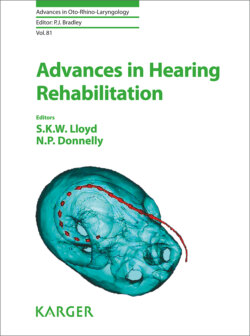Читать книгу Advances in Hearing Rehabilitation - Группа авторов - Страница 13
На сайте Литреса книга снята с продажи.
Clinical Utility
ОглавлениеHigher resolution, lower radiation doses and lower price of the CBCT machines have made them very useful in dentistry and in the head and neck areas, especially for visualization of the ears and paranasal sinuses. For example, submillimetric otosclerotic foci are clearly visible [2], as well as all types of ossicular pathology, discontinuity and fixation (Fig. 1). It is also ideal for the evaluation of inner ear malformations including the cochlear dysplasias, large vestibular aqueduct syndrome or semicircular canals dehiscences. In the latter pathology, CBCT has a much lower false-positive diagnostic rate than MDCT (Fig. 2). CBCT is also helpful in identifying the position of the electrode after cochlear implantation.
Fig. 2. Coronal MDCT image (a), coronal CBCT image (b): Multidetector CT image in the plane of the right superior and semicircular canal (a) with an arrow showing a suspected dehiscence of the canal. b shows the same canal in the same patient imaged a few weeks later with CBCT. A thin layer of bone covering the superior semicircular canal is visible (arrow).
The main limitations of CBCT are increased image artefacts caused by scatter radiation due to wider collimation and increased examination and computational time resulting in higher susceptibility to motion artefacts. CBCT also has limitations in the accurate estimation of the degree of radiodensity, measured in Hounsfield Units.
